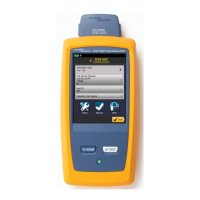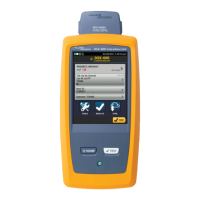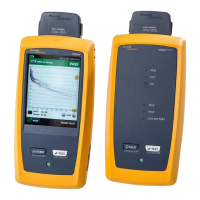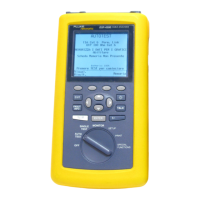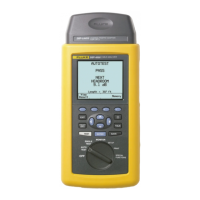DSX-600 CableAnalyzer
Technical Reference Handbook
66
The twist rate varies slightly among wire pairs. If you untwist
and straighten all the pairs, they will have slightly different
lengths.
Differences between measured and actual lengths can be caused
by variations in the cable’s NVP value. NVP values can vary among
cable types, lots, and manufacturers. In most cases, these
differences are minor and may be ignored.
Propagation delay is the time taken for a test pulse to get to the
end of a wire pair. The delay is measured in nanoseconds. One
nanosecond is one-billionth of a second, or 0.000000001 second.
Propagation delays vary slightly among pairs because of small
differences in electrical characteristics and length. The tester uses
the propagation delay for each pair and the NVP for the cable
type to calculate the length of each pair. The tester subtracts the
propagation delays for the link interface adapters, so the length
results do not include the length of the cables on the permanent
link adapters.
Delay skews are the differences in propagation delays between
the shortest delay and the delays of the other wire pairs. The
shortest delay shows as “0” in the delay skew results.
Refer to Figure 26:
PROPAGATION DELAY: The time taken for a test pulse to get
to the end of a wire pair.
DELAY SKEW: The differences in propagation delays between
the shortest delay and the delays of the other wire pairs. The
shortest delay shows as “0” in the delay skew results.
The tester shows a limit for propagation delay and delay skew
if the measurements are required by the selected test limit.
For measurements not required, the limit shows as N/A.
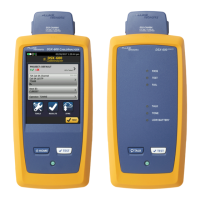
